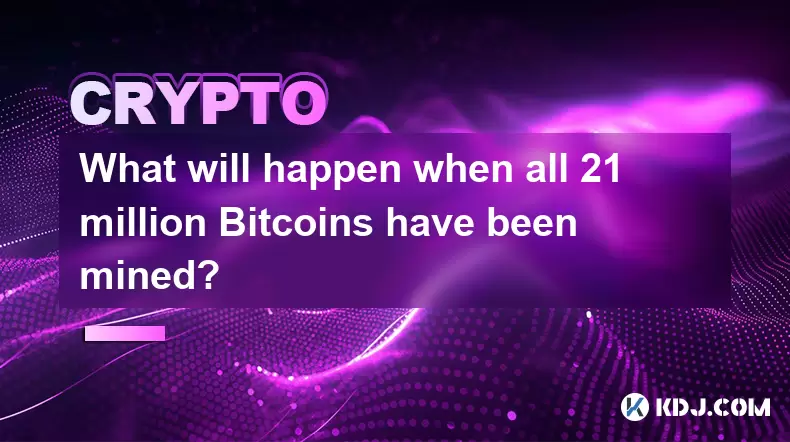-
 Bitcoin
Bitcoin $114000
0.38% -
 Ethereum
Ethereum $3494
-0.29% -
 XRP
XRP $2.876
-1.80% -
 Tether USDt
Tether USDt $0.9999
0.02% -
 BNB
BNB $749.1
-0.45% -
 Solana
Solana $161.8
-1.23% -
 USDC
USDC $0.9998
0.00% -
 TRON
TRON $0.3249
-0.42% -
 Dogecoin
Dogecoin $0.1987
-0.05% -
 Cardano
Cardano $0.7247
1.90% -
 Hyperliquid
Hyperliquid $38.39
0.52% -
 Stellar
Stellar $0.3889
2.87% -
 Sui
Sui $3.459
1.66% -
 Chainlink
Chainlink $16.18
1.43% -
 Bitcoin Cash
Bitcoin Cash $540.8
1.19% -
 Hedera
Hedera $0.2449
3.79% -
 Ethena USDe
Ethena USDe $1.001
0.03% -
 Avalanche
Avalanche $21.41
-0.12% -
 Toncoin
Toncoin $3.699
4.73% -
 Litecoin
Litecoin $110.0
3.08% -
 UNUS SED LEO
UNUS SED LEO $8.964
0.05% -
 Shiba Inu
Shiba Inu $0.00001221
1.28% -
 Polkadot
Polkadot $3.608
1.91% -
 Uniswap
Uniswap $9.150
1.59% -
 Monero
Monero $297.7
0.78% -
 Dai
Dai $1.000
0.02% -
 Bitget Token
Bitget Token $4.319
0.78% -
 Pepe
Pepe $0.00001051
1.89% -
 Cronos
Cronos $0.1323
0.20% -
 Aave
Aave $257.8
1.36%
How does leverage trading magnify Bitcoin's earnings?
Leverage trading amplifies Bitcoin profits proportionally, but also magnifies losses. Understanding margin requirements, liquidation risks, and employing effective risk management are crucial for success, as higher leverage ratios increase both potential gains and losses significantly.
Mar 11, 2025 at 11:35 pm

Key Points:
- Leverage trading allows traders to control a larger position in Bitcoin than their initial capital allows.
- This magnification of trading power increases potential profits proportionally.
- However, it also significantly amplifies potential losses.
- Understanding margin requirements, liquidation, and risk management is crucial for successful leverage trading.
- Different exchanges offer varying leverage ratios, impacting both profit and risk.
How Does Leverage Trading Magnify Bitcoin's Earnings?
Leverage trading in the cryptocurrency market, particularly with Bitcoin, is a double-edged sword. It offers the potential for significantly amplified profits but equally magnifies the risk of substantial losses. Understanding how leverage works is crucial before engaging in this type of trading. Essentially, leverage allows you to borrow funds from an exchange to increase your trading position size beyond your own capital. For example, with 5x leverage, a $100 investment allows you to control a $500 position in Bitcoin.
Let's say you believe Bitcoin's price will rise. You invest $100, and the price increases by 10%. Without leverage, your profit would be $10. However, with 5x leverage, your $100 controls $500 worth of Bitcoin. A 10% price increase now yields a $50 profit, a five-fold magnification of your earnings. This illustrates the power of leverage to amplify gains. The increase in profit is directly proportional to the leverage used. Higher leverage ratios lead to greater potential profits but also higher potential losses.
However, it's equally important to understand the downside. If the price of Bitcoin drops by 10%, your $100 investment without leverage loses $10. With 5x leverage, that same 10% drop translates to a $50 loss—again, five times the loss without leverage. This demonstrates how quickly leveraged positions can lead to significant losses. The risk is directly proportionate to the leverage applied. A small price movement can lead to a disproportionately large loss with high leverage.
Understanding Margin Requirements and Liquidation
When engaging in leverage trading, you'll encounter the term "margin." This is the amount of your own capital you need to maintain as collateral for your leveraged position. The exchange sets margin requirements, typically expressed as a percentage of the total position value. For example, a 20% margin requirement on a $500 position means you need to maintain $100 in your account. If the price moves against your position, and your margin falls below the required level, the exchange may initiate a "liquidation."
Liquidation is the forced closure of your leveraged position by the exchange to protect them from losses. This happens when your margin falls below the maintenance margin. The exchange sells your Bitcoin to recover the borrowed funds, resulting in a complete loss of your initial investment and potentially additional losses depending on the market price at the time of liquidation. Understanding margin calls and the risk of liquidation is paramount in managing your leverage trading.
Risk Management Strategies for Leverage Trading
Successful leverage trading relies heavily on effective risk management. Here are some key strategies:
- Start Small: Begin with small positions and low leverage to gain experience and understand the dynamics before scaling up.
- Set Stop-Loss Orders: These orders automatically close your position if the price reaches a predetermined level, limiting potential losses.
- Diversify Your Portfolio: Don't put all your eggs in one basket. Spread your investments across different assets to mitigate risk.
- Use Leverage Sparingly: Avoid excessively high leverage ratios, as they dramatically increase the risk of liquidation.
- Regularly Monitor Your Positions: Stay informed about market movements and your position's health to avoid unexpected losses.
Leverage Ratios and Exchange Variations
Different cryptocurrency exchanges offer varying leverage ratios. Some may provide up to 100x or even higher leverage, while others might offer only 2x or 5x. Higher leverage ratios are associated with higher risk. Choosing an exchange and leverage level appropriate to your risk tolerance and trading experience is critical. Always thoroughly research and compare the terms and conditions offered by different exchanges before committing to a trading strategy. It is important to be aware that regulations regarding leverage trading in the cryptocurrency space vary by jurisdiction.
Frequently Asked Questions:
Q: What is the best leverage ratio for Bitcoin trading?
A: There's no single "best" leverage ratio. The optimal level depends entirely on your risk tolerance, trading experience, and market conditions. Starting with low leverage and gradually increasing it as you gain experience is generally recommended.
Q: Can I lose more than my initial investment in leverage trading?
A: Yes, you can. This is a key risk of leverage trading. If the market moves significantly against your position, you can lose more than your initial investment due to the borrowed funds.
Q: How do I choose a suitable cryptocurrency exchange for leverage trading?
A: Look for reputable exchanges with robust security measures, competitive fees, and a user-friendly interface. Consider factors like the available leverage ratios, margin requirements, and liquidation policies. Read reviews and compare offerings before making a decision.
Q: Is leverage trading suitable for beginners?
A: Leverage trading is generally not recommended for beginners. It requires a strong understanding of market dynamics, risk management, and the potential for significant losses. It's crucial to gain experience with lower-risk trading strategies before venturing into leverage trading.
Disclaimer:info@kdj.com
The information provided is not trading advice. kdj.com does not assume any responsibility for any investments made based on the information provided in this article. Cryptocurrencies are highly volatile and it is highly recommended that you invest with caution after thorough research!
If you believe that the content used on this website infringes your copyright, please contact us immediately (info@kdj.com) and we will delete it promptly.
- Arbitrage Adventures: Creditcoin, Kaspa, and Chasing Crypto Profits
- 2025-08-03 20:30:16
- Solana's Next Chapter: SOL Prediction and the SOLF Token Buzz
- 2025-08-03 18:30:16
- Token Chart Buzz: Analysts Eye Potential Price Increase with Mutuum Finance (MUTM)
- 2025-08-03 18:30:16
- Dogecoin, Utility Tokens, and Whales: A New Era for Crypto?
- 2025-08-03 19:10:16
- Small Cap Crypto Gem Alert: Ruvi AI's 100x Potential Shakes Up Solana, Ethereum, and XRP
- 2025-08-03 19:10:16
- Cryptos, Scarcity, and Beta Games: A Troller Cat's Perspective on the 2025 Meme Coin Mania
- 2025-08-03 19:15:16
Related knowledge

What is the difference between holding Bitcoin on an exchange versus in a personal wallet?
Aug 02,2025 at 03:15pm
Understanding Custodial vs Non-Custodial ControlWhen holding Bitcoin on an exchange, users are essentially entrusting their assets to a third party. E...

What is a 51% attack, and could it destroy Bitcoin?
Aug 03,2025 at 05:08pm
Understanding the Concept of a 51% AttackA 51% attack refers to a scenario in which a single entity or group gains control of more than half of a bloc...

What are the biggest security risks associated with holding Bitcoin?
Aug 03,2025 at 03:16pm
Exposure to Private Key CompromiseOne of the most critical security risks when holding Bitcoin is the compromise of private keys. These cryptographic ...

Can governments shut down or ban Bitcoin?
Aug 02,2025 at 09:44am
Understanding Bitcoin’s Decentralized StructureBitcoin operates on a decentralized peer-to-peer network, meaning it is not controlled by any single en...

What will happen when all 21 million Bitcoins have been mined?
Aug 03,2025 at 09:50am
Understanding the 21 Million Bitcoin CapThe 21 million Bitcoin cap is a foundational rule embedded in Bitcoin’s source code, designed by Satoshi Nakam...

What are Bitcoin transaction fees, and why do they fluctuate?
Aug 03,2025 at 01:51am
Understanding Bitcoin Transaction FeesBitcoin transaction fees are small amounts of Bitcoin paid by users to miners for processing and confirming tran...

What is the difference between holding Bitcoin on an exchange versus in a personal wallet?
Aug 02,2025 at 03:15pm
Understanding Custodial vs Non-Custodial ControlWhen holding Bitcoin on an exchange, users are essentially entrusting their assets to a third party. E...

What is a 51% attack, and could it destroy Bitcoin?
Aug 03,2025 at 05:08pm
Understanding the Concept of a 51% AttackA 51% attack refers to a scenario in which a single entity or group gains control of more than half of a bloc...

What are the biggest security risks associated with holding Bitcoin?
Aug 03,2025 at 03:16pm
Exposure to Private Key CompromiseOne of the most critical security risks when holding Bitcoin is the compromise of private keys. These cryptographic ...

Can governments shut down or ban Bitcoin?
Aug 02,2025 at 09:44am
Understanding Bitcoin’s Decentralized StructureBitcoin operates on a decentralized peer-to-peer network, meaning it is not controlled by any single en...

What will happen when all 21 million Bitcoins have been mined?
Aug 03,2025 at 09:50am
Understanding the 21 Million Bitcoin CapThe 21 million Bitcoin cap is a foundational rule embedded in Bitcoin’s source code, designed by Satoshi Nakam...

What are Bitcoin transaction fees, and why do they fluctuate?
Aug 03,2025 at 01:51am
Understanding Bitcoin Transaction FeesBitcoin transaction fees are small amounts of Bitcoin paid by users to miners for processing and confirming tran...
See all articles

























































































